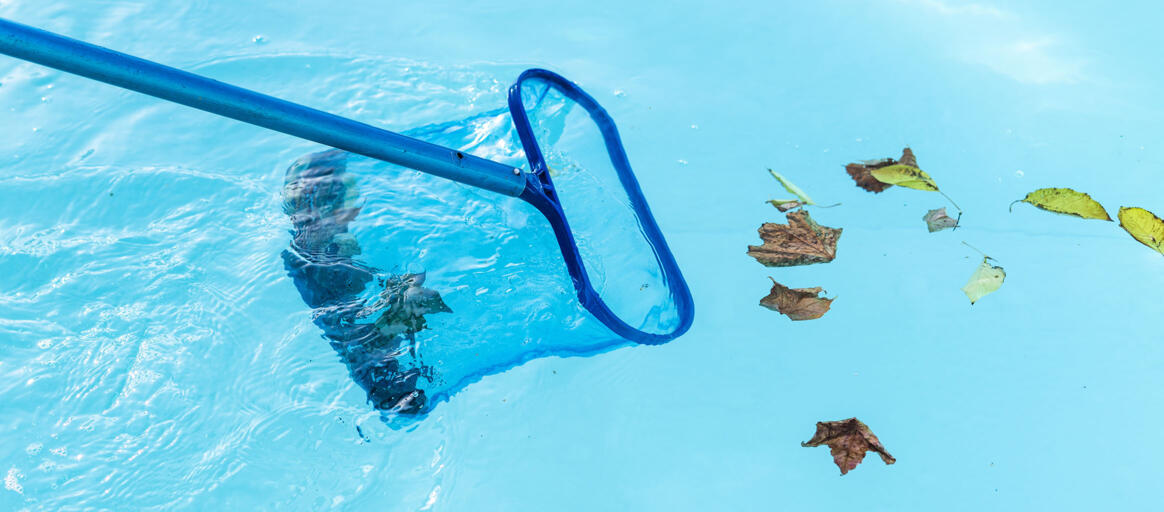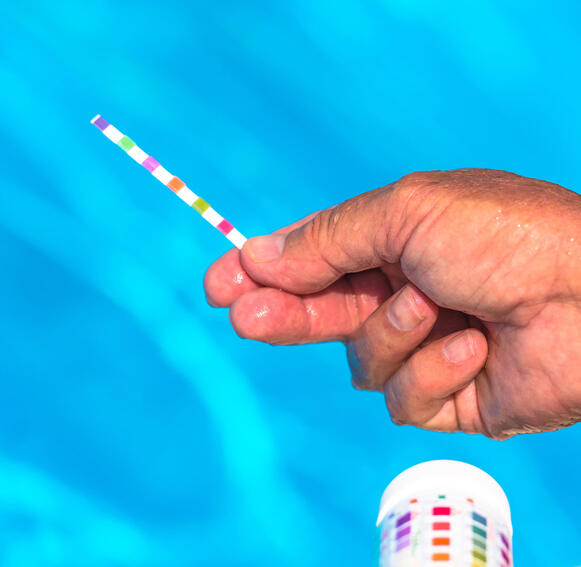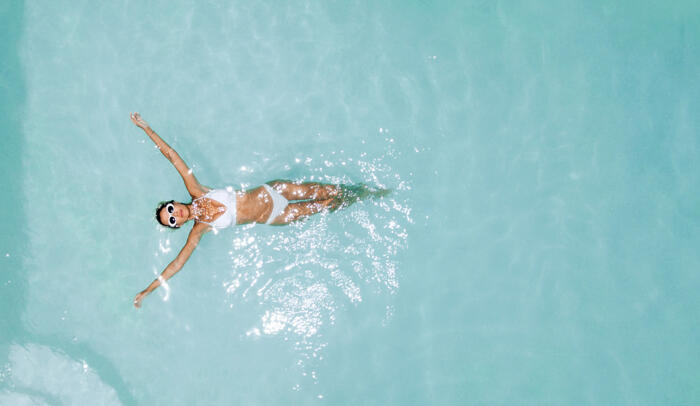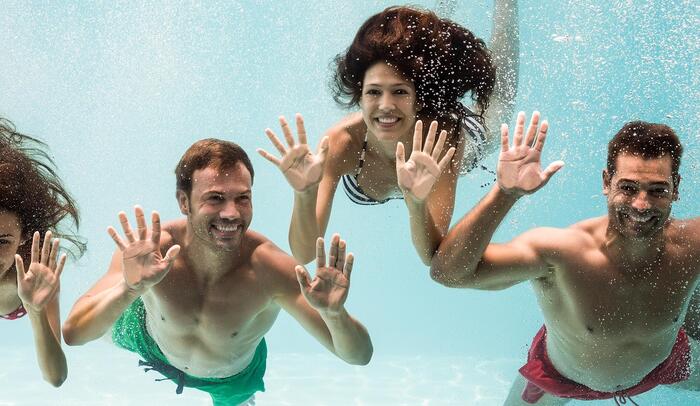How do you make your swimming pool ready for summer? A step-by-step plan
When the weather is hot, there is nothing more refreshing than a splash in the swimming pool - unless of course your water paradise starts to look like a mud bath or algae tank. Are you one of the lucky few with a swimming pool in their garden? Then it's high time to get it ready for the summer.

Before using your pool again, it is best to check all the technical systems.
1. Get your swimming pool ready for the summer with a good clean.
After a long winter without any use under the tarpaulin, neither the swimming pool nor the water will be in good shape. Get your cleaning materials out, as a thorough clean is essential.
- Remove leaves and any other floating debris with a scoop net or telescopic rod.
- Take care of smaller dirt particles with a manual or automatic pool vacuum cleaner.
- Clean the pool roller shutter, the cover and the edge of the pool, so that no dirt or limescale remains.
2. Check the technical installation
Your pool is now clean, but there is still a lot of work to do. Before using your pool again, it is best to check all the technical systems.
- Start with a backwash of the swimming pool filter. This should ideally be done once a week to prevent the filter from becoming completely clogged. Always switch off the swimming pool pump, and set the lever to the 'waste' position.
- Rinse the filter again momentarily and switch the pump back on. Check that the pump is working properly, even when using the pool. Filter the water for twelve hours a day until it is completely clean. Tip: remember to replace the sand filters every three to five years.
- Make sure that the inlets are not clogged. They make sure that splashed water drains back to the pool.
- Clean the collection filters of the skimmers regularly, and the suction drainage system at the bottom.
- Finally, don't forget to turn the heater back on, especially if you intend to take a dip in your pool straightaway.

3. Improving water quality
The water quality check is possibly the most important task. Beware: swimming pool water that looks healthy may not actually be. So definitely don't skip this step!
- Check the pH value of the water with a test strip. A value between 7.2 and 7.6 is ideal. If the pH value is above or below these values, you will need to adjust the water with pH Plus or pH Minus.
- You then need to measure the chlorine level. This needs to be approximately 1 mg/litre to effectively prevent bacteria growth. Do you intend to adjust the chlorine level of your pool? Don't reach for the chlorine tablets straightaway, unfortunately these are not very environmentally-friendly. In addition, you might get the dosing wrong. It is better to choose an alternative, such as salt electrolysis, which is currently by far the most popular method.
4. Disinfecting your swimming pool with salt electrolysis
Salt electrolysis uses salt instead of chlorine as the disinfectant. An electrode splits the salt (or sodium chloride) into sodium and chloride. The sodium binds directly with the water, while the chloride disinfects the water. So you still use chlorine, but in a much smaller dose. Disinfecting your swimming pool with salt electrolysis offers many more great advantages:
- Once the chloride has reacted, it binds back to the sodium. As a result, nothing is lost and the entire disinfection process can be repeated. So you can use each dose of swimming pool salt multiple times.
- Disinfection is completely automatic.
- The risk of irritation to the skin and eyes is much smaller than with chlorine tablets or dosing pumps.
In short, salt electrolysis is a simple, safe and sustainable alternative to traditional chlorine baths. But you just need one thing for a good result: high quality salt. For example, POOLSEL® from Zoutman is an excellent choice. This pool salt is made from coarse sea salt and does not contain any additives. In addition, POOLSEL® has the ideal granule distribution for rapid dissolution in the pool water.

